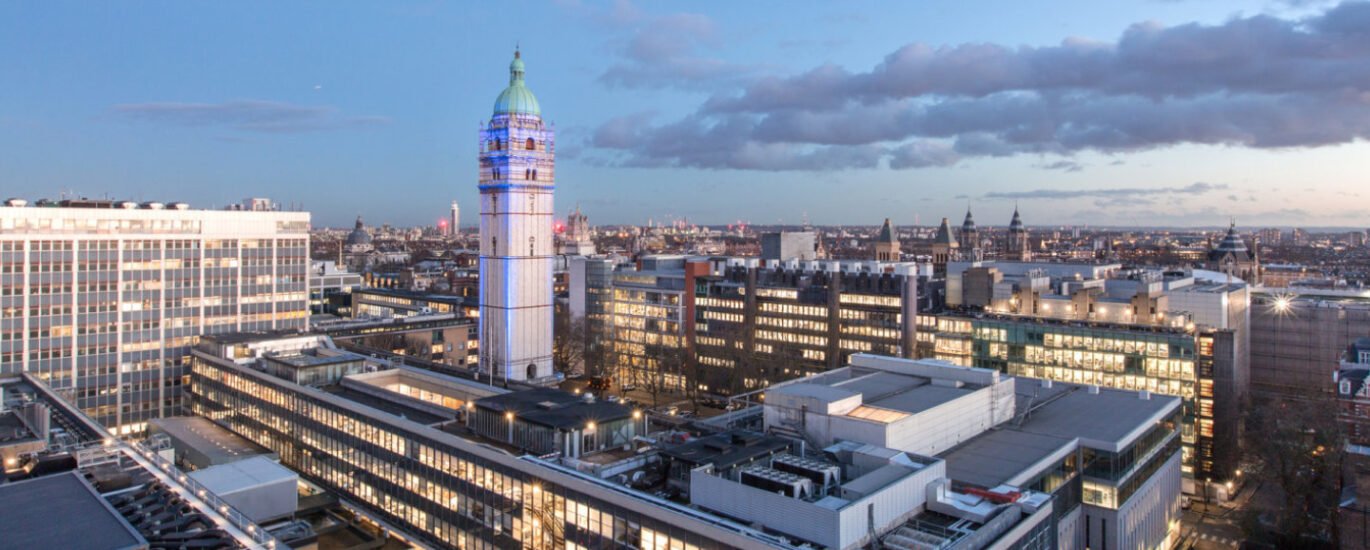Imperial College London
Imperial College London – Overview
Imperial College London is a public institution founded in 1907. It was initially part of the University of London but became fully independent in 2007. This science-focused school has several campuses dispersed throughout London and its suburbs. The largest campus is located in South Kensington, a thriving district in Central London that is home to iconic cultural and academic establishments such as the Natural History Museum.
With more than 15,000 students enrolled, fees are greater for students from outside the European Union. Freshers—the term used in UK universities—undergraduate first years are guaranteed accommodation, but returning undergraduates have fewer options on campus. Graduate students at the Silwood Park campus, approximately 25 miles west of Central London, also enjoy access to university accommodation.
The university is organized into four major academic domains: engineering, medicine, natural sciences, and business. Its academic session spans three terms—autumn, spring, and summer—where the language of study is primarily English.
Imperial boasts a number of research institutions, such as the Data Science Institute, the Institute of Global Health Innovation, and the Centre for Hedge Fund Research. Approximately 400 students receive practical experience in research via the Undergraduate Research Opportunities Programme annually. The International Research Opportunities Programme, in turn, puts Imperial undergraduates at collaborating universities around the world—such as MIT in the U.S. and Seoul National University in South Korea—for a minimum of eight weeks of summer research.
The university boasts a rich heritage of pioneering research, such as Alexander Fleming’s 1945 isolation of penicillin, an antibiotic now commonly used to treat bacterial infections.
Imperial College London – Key Facts
Total students: 21,065
International students: 12,565
Academic staff: 1,770
International staff: 760
Undergraduate degrees awarded: 3,030
Master’s degrees awarded: 5,285
Doctoral degrees awarded: 835
Research-only staff: 2,240
New undergraduate students: 3,145
New master’s students: 4,290
New doctoral students: 680
Imperial College London – Rankings
Imperial College London ranks #11 in the Best Global Universities. Institutions are ranked against widely accepted measures of excellence.
Global Rankings
#11 – Best Global Universities (tie)
#4 – Best Global Universities in Europe
#4 – Best Global Universities in the UK
Subject Rankings
#276 – Agricultural Sciences
#44 – Artificial Intelligence (tie)
#26 – Biology and Biochemistry
#31 – Biotechnology and Applied Microbiology
#3 – Cardiac and Cardiovascular Systems
#36 – Cell Biology
#35 – Chemical Engineering (tie)
#48 – Chemistry (tie)
#48 – Civil Engineering
#11 – Clinical Medicine
#39 – Computer Science
#49 – Condensed Matter Physics
#30 – Ecology
#67 – Economics and Business
#30 – Electrical and Electronic Engineering
#13 – Endocrinology and Metabolism
#27 – Energy and Fuels
#25 – Engineering (tie)
#133 – Environmental Engineering
#39 – Environment/Ecology
#18 – Gastroenterology and Hepatology
#44 – Geosciences
#51 – Green and Sustainable Science and Technology
#11 – Immunology
#6 – Infectious Diseases
#47 – Materials Science
#32 – Mathematics
#20 – Mechanical Engineering
#41 – Meteorology and Atmospheric Sciences
#11 – Microbiology
#49 – Molecular Biology and Genetics
#68 – Nanoscience and Nanotechnology
#29 – Neuroscience and Behavior (tie)
#35 – Oncology
#51 – Optics
#49 – Pharmacology and Toxicology
#65 – Physical Chemistry (tie)
#45 – Physics
#99 – Plant and Animal Science (tie)
#100 – Polymer Science (tie)
#25 – Psychiatry/Psychology
#6 – Public, Environmental and Occupational Health (tie)
#6 – Radiology, Nuclear Medicine and Medical Imaging
#32 – Public Health and Social Sciences
#67 – Space Science#17 – Surgery
#55 – Water Resources (tie)
Ranking Indicators for 2025-2026
Imperial’s #11 ranking in Best Global Universities is based on 13 performance indicators. This is how it ranked in each area:
Global score: 85.2
Global research reputation: #18
Regional research reputation: #34
Publications: #32
Books: #181
Conferences: #32
Normalized citation impact: #45
Total citations: #17
Top 10% most cited publications: #19
Percentage of top 10% most cited publications: #45International collaboration (compared to country): #358
International collaboration: #146
Top 1% most cited papers: #11
Percentage of top 1% most cited papers: #32

